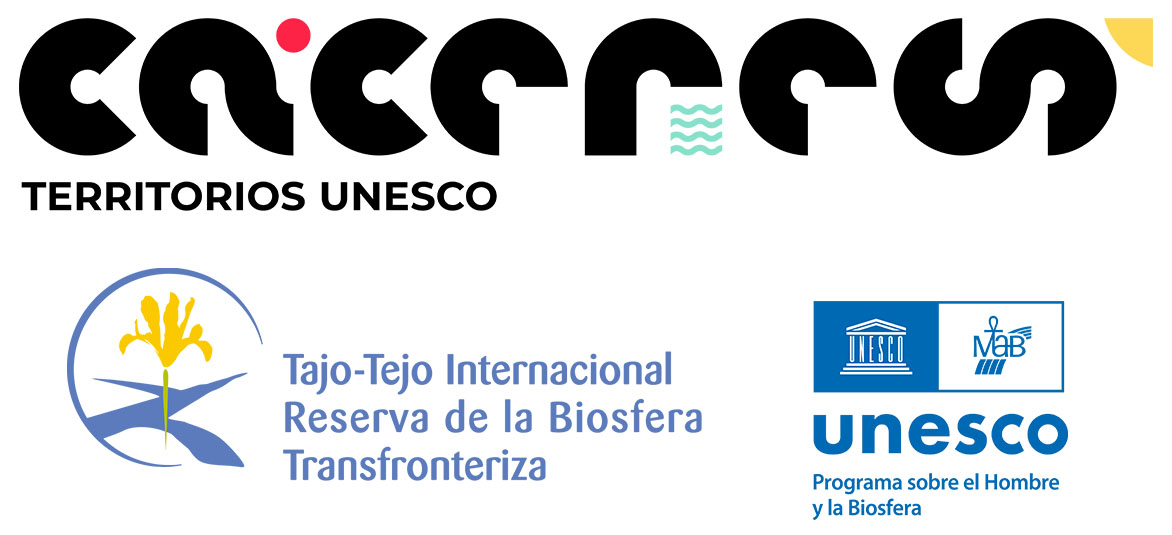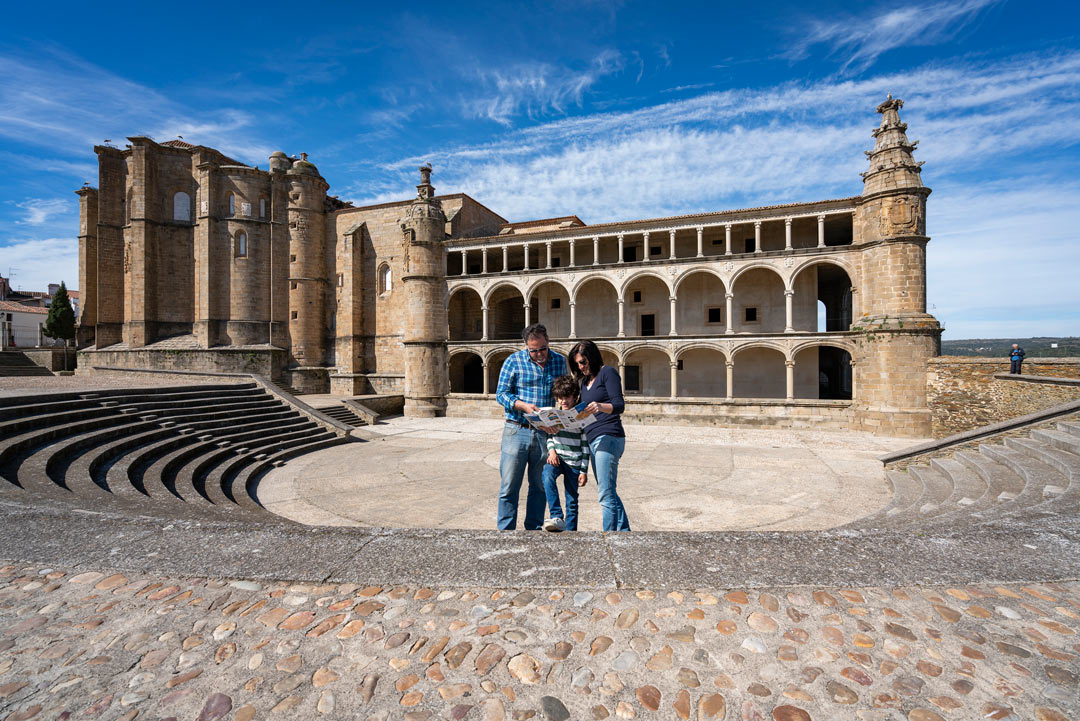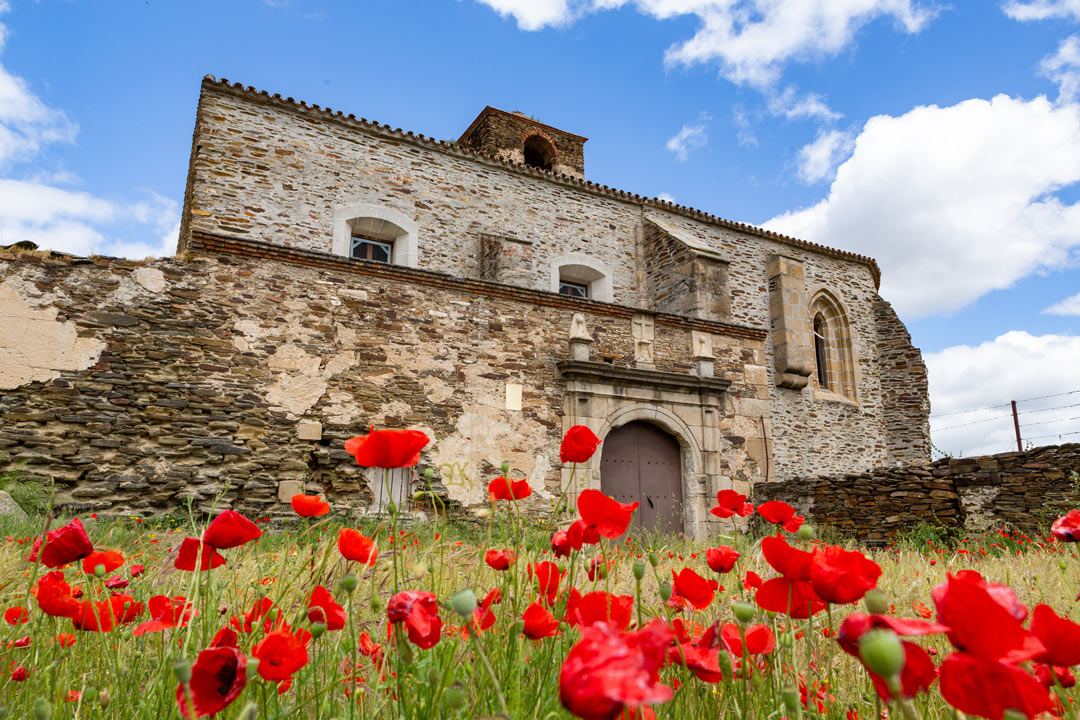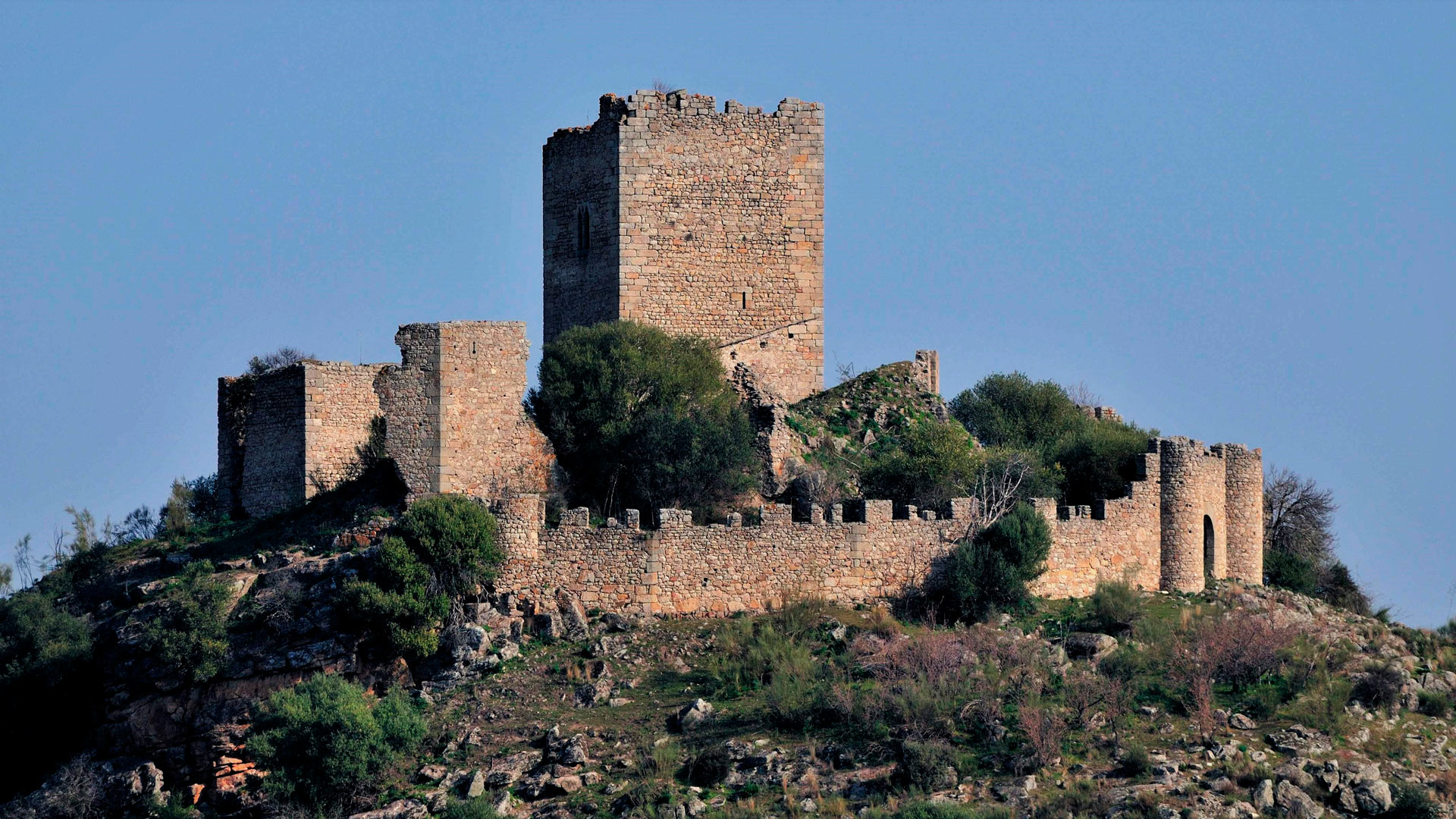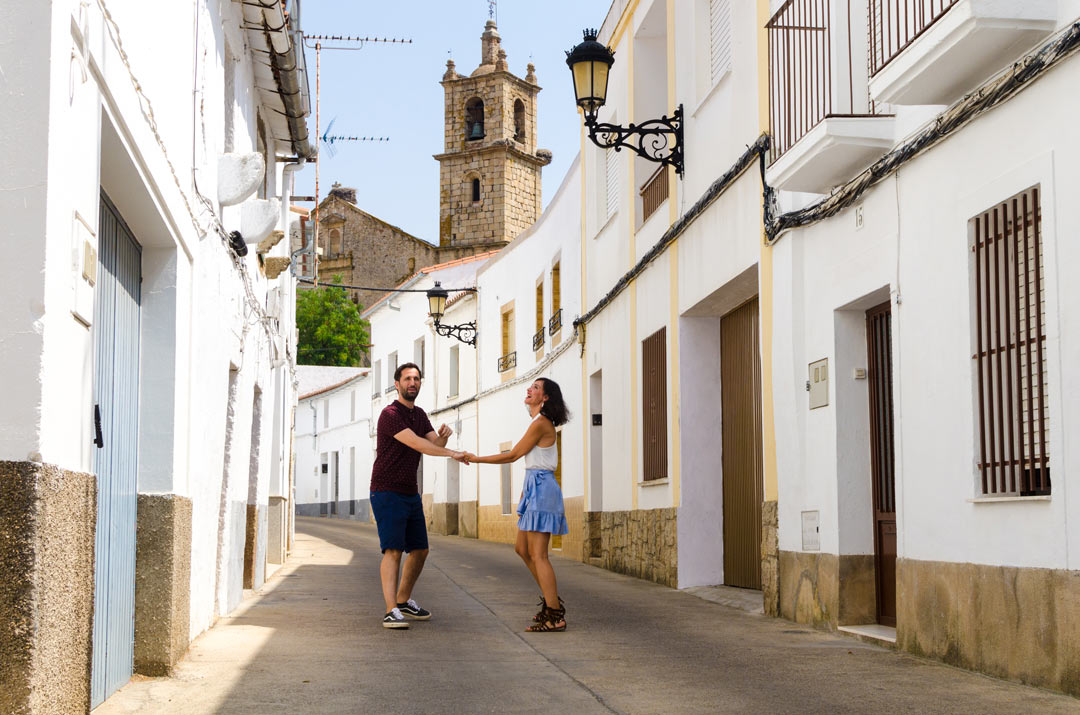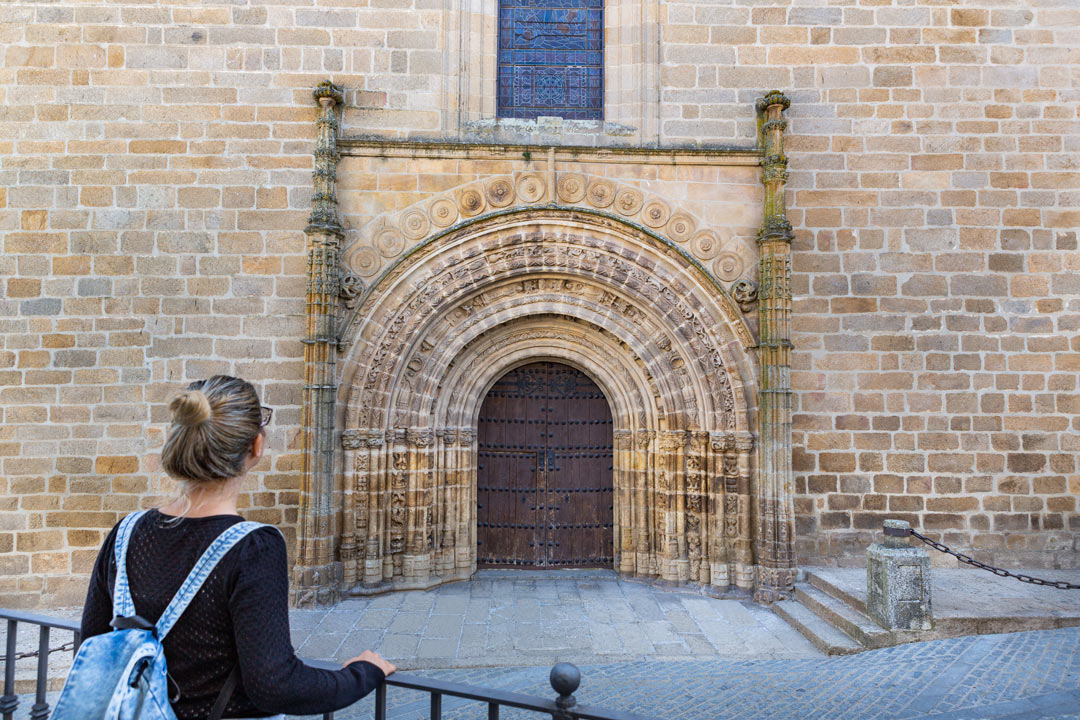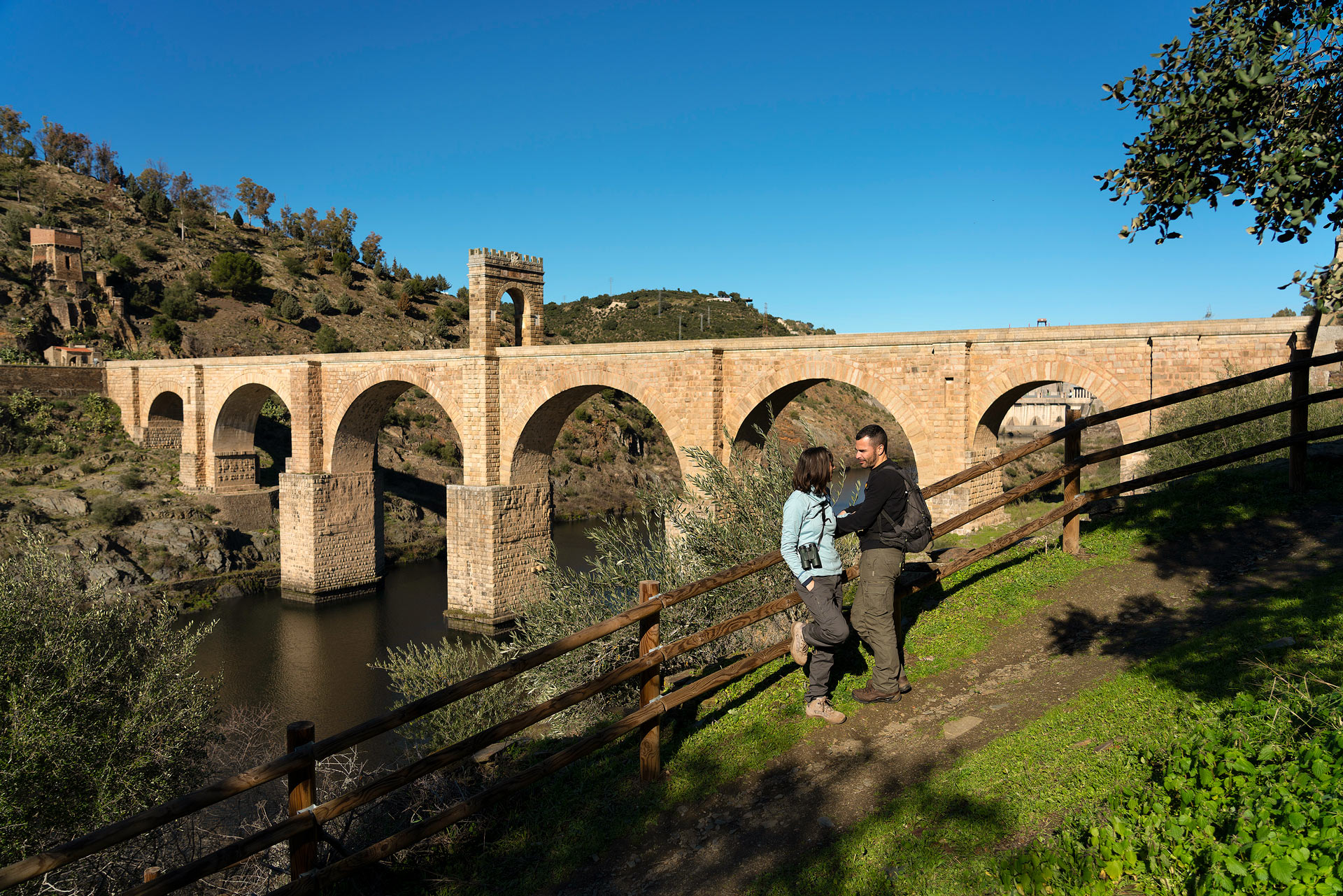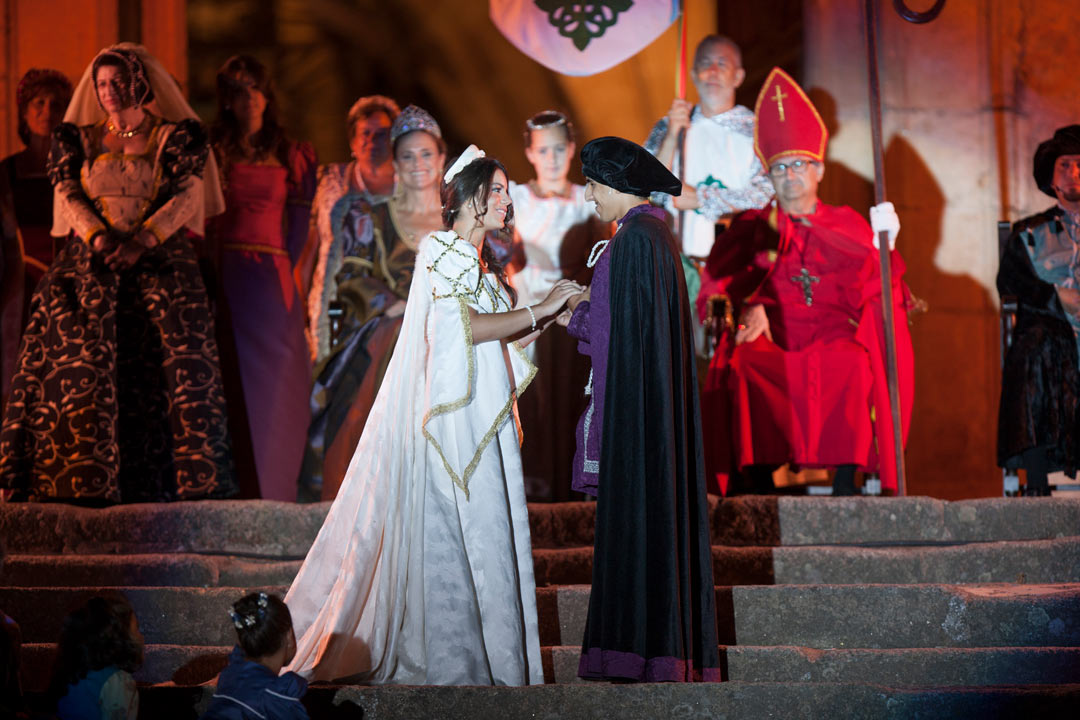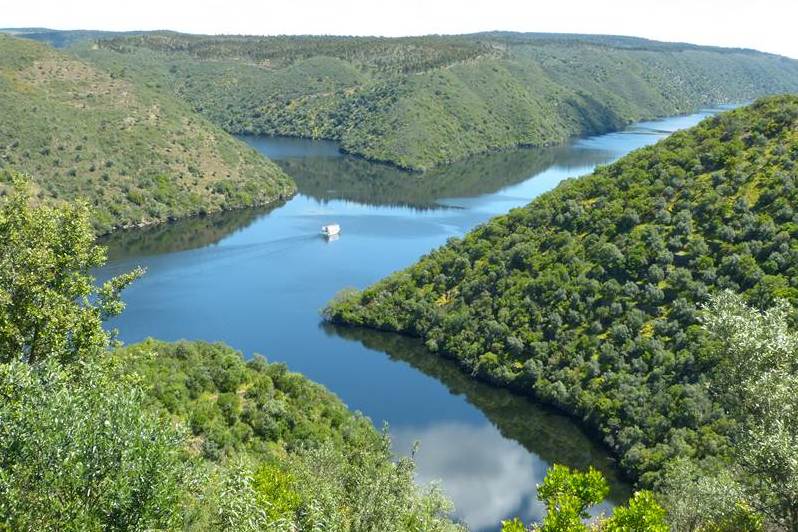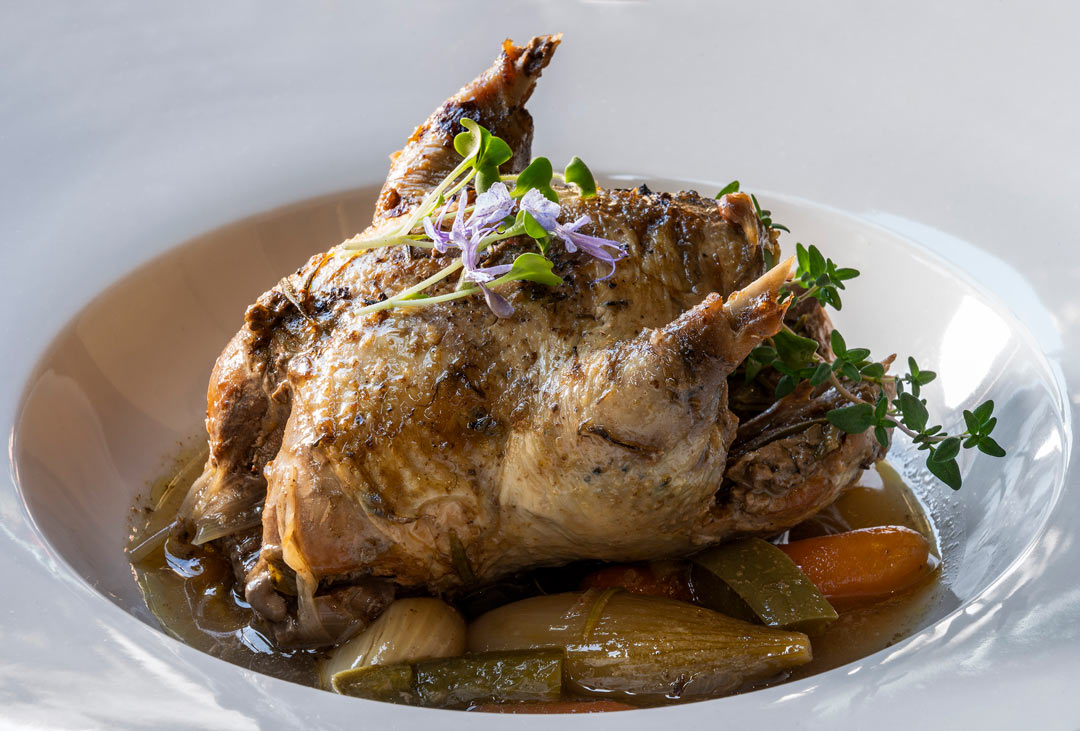Historical Ensembles
Travel back in time
Like any good frontier enclave the Tajo Internacional Biosphere Reserve is steeped in history. This territory and its villages have been important places in the history of the Iberian Peninsula during prehistory and also in Roman times, during the Reconquest, and in the Modern Age.
Its wild landscape and its sierras, a key element for military defence, and of course the natural frontier provided by the River Tajo have generated unique monumental complexes.
Castles, churches, palaces, stately homes, and outstanding popular architecture play a leading role in the towns and villages of this legendary frontier land.
Alcántara is much more than its extraordinary Roman Bridge. It is also particularly known for the 16th-century Conventual de San Benito which was the cradle of the proud Order of Alcántara. In this amazing building full of rooms and patios the fabulous Gallery of Charles V stands out; each summer it becomes a perfect setting for the Alcántara Classical Theatre Festival. Travel back in time to the Golden Age.
Traces of the Sephardim are clearly visible in the alleyways of its Jewish Quarter in which the ancient synagogue survives. Strolling through its narrow streets we come to the Church of Santa María de Almocóvar. The plaza of its main doorway is dominated by an impressive sculpture dedicated to San Pedro de Alcántara. The following buildings are of great artistic value: the Convento del Sancti Spiritu and the Convento de San Bartolomé (the current Alcántara Hostelry), the Church of La Encarnación, the Church of Our Lady of Los Remedios, and its stately homes, one of which (that of the Arias de Quintadueñas) holds the Tajo Internacional Nature Reserve Interpretation Centre.
Zarza la Mayor, the phoenix of the Tajo Internacional Biosphere Reserve
The history of this village is full of wars and conflicts with Portugal. This is so to such an extent that Zarza was devoured by fire on as many as four occasions. Given the warlike character of its inhabitants, Philip IV granted the town the title of ‘la Mayor’ to acknowledge its heroism.
This village is known particularly for Peñafiel Castle which is of Arab origin. It is also referred to as Racha-Rechel (the stone of Rachel). This fortification became the Command of the Order of Alcántara and is the source of much local pride. Zarza la Mayor has its noble buildings such as the Casa de las Encomiendas and the Palacio del Comendador, which show how important this small town was in the past. The 15th-century Church of San Andrés and the Chapels of Our Lady of the Castle and San Bartolomé are also interesting and worth visiting.
The former economic might of the town is borne out by the unusual Fábrica de la Seda (Silk Factory), the current Town Hall, and the fountain known as the Fuente Conceja, which dates from the Middle Ages and is an Asset of Cultural Interest in the monument category.
Valencia de Alcántara, a melting pot of cultures
If you like losing yourself in narrow alleyways to steep yourself in the atmosphere of former times, Valencia de Alcántara is an ideal destination. Valencia de Alcántara and its Gothic Jewish Quarter were declared an Asset of Cultural Interest in the Historical-Artistic Ensemble category in 1997.
Its frontier character is the key to understanding the artistic heritage and the history of this town, which is the life and soul of what we today refer to affectionately as ‘La Raya’ (the line). Many of its inhabitants took refuge in Castelo de Vide over the border when they were expelled from Spain by the Catholic Monarchs in 1492. These links have been maintained over time.
Three cultures coexisted here, those of Christians, Arabs, and Jews, in a typically medieval irregular layout of narrow winding streets full of picturesque spots which have inspired numerous stories and legends.
Visitors can also get to know the magnificent synagogue, the castle and its Keep, and the Church of Santa María de Rocamador which was declared an Asset of Cultural Interest in the Historical-Artistic Monument category in 1982 and houses important examples of sacred art by Berruguete, “the Divino” Morales, and Churriguera.
Few destinations have so much interesting history as Valencia de Alcántara, which has been inhabited since prehistoric times (the megalithic complex in its municipal district is one of the most important in Europe); it is a distinguished fortified frontier town with a melting pot of cultures.
It should be stressed that in Brozas one can visit the Casa de El Brocense, who was one of the most relevant 16th-century Spanish humanists. His house is in Calle Aldehuela and allows you to get to know the origins of this important Spanish intellectual of the Modern Age.
Brozas, High Command of the Order of Alcántara
In this charming white town you will find a perfect fusion between military, religious, and civil buildings, which is a testimony of its rich history as High Command of the Order of Alcántara.
A stroll through Brozas is a pleasure for the senses. Its white streets are full of noble balconies and coats of arms which adorn stately homes such as the 17th-century Casa Palacio de los Argüello-Carvajal, the Casa Palacio de los Flores where Nicolás de Ovando was born in the 15th century, and the 18th-century Casa Palacio de los Bravo. Brozas is especially known for the impressive Fortress of the High Command of the Order of Alcántara (13th-18th centuries) which retains the remains of its massive bastions.
In 2016 it was deservedly declared a Historical Ensemble. From a religious point of view visiting the 15th-century Church of Santa María Mayor de la Asunción is a must; it has also been declared an asset of Cultural Interest in the monument category and is one of the largest in Extremadura. The town also has other noteworthy examples of religious power such as the 15th-century Church of Los Santos Mártires, the Convento de las Comendadoras, and the Convent of Our Lady of La Luz, which are both from the 16th century.
Historical towns on the other side of the border
The Portuguese side of the Tajo Internacional Nature Reserve has very interesting historical towns and villages which are well worth a visit. In the area of Portugal Centro the parishes of Penamacor, Idanha-a-Nova, Castelo Branco, and Vila Velha de Rodão belong to the reserve and three historical villages stand out: Monsanto, Penha Garcia, and Indanha-a-Velha.
In the area of the reserve in the Alentejo, magical enclaves can be found all along the Sierra de San Mamede: Castelo de Vide, Marvão, Portalegre, Gavião, and Nisa.

